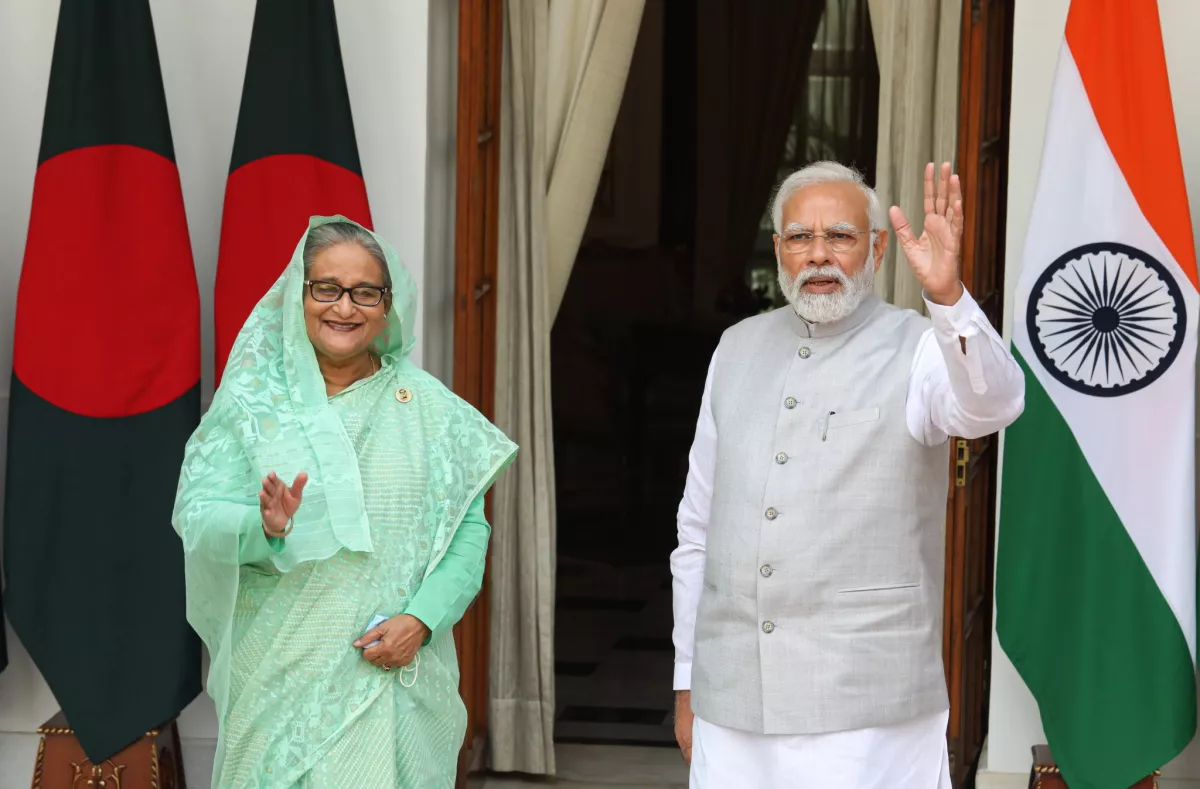South East Asia: Watch out for these key developments in 2025 An article by Foreign Policy
South Asia will face a host of challenges in 2025, both domestic and international. While the region contends with external issues, such as the impact of the Middle East and Ukraine conflicts and great-power rivalry, it will also have to address internal tensions, new political changes such as the arrival of Donald Trump, economic struggles, and complex border dynamics, especially for India. The Foreign Policy journal identifies the following four significant storylines that will shape the region this year.
India's diplomatic relations with its neighbors will be crucial in 2025. India-Pakistan relations, which had been relatively stable since a truce in February 2021, are now under strain. Increased terrorist attacks in Indian-administered Kashmir, for which New Delhi tends to shift the blame onto Islamabad, and cross-border violence have raised concerns about a potential escalation. This will test India-Pakistan ties, which had remained relatively calm in recent years.
India’s relationship with China is alsoundergoing a shift. After tensions sparked by a deadly 2020 clash along their equally disputed border, a new agreement last year could pave the way for greater cooperation, particularly in commercial sectors. This shift may provide India some diplomatic space to navigate its relationships in the region.
At the same time, India faces neighborhood challenges, notably with Bangladesh that is awaiting the extradition of it's former Prime Minister Sheikh Hasina, a close ally of New Delhi who has fled to India after she was ousted in 2024. Mass student-led protests that saw over 1,500 people get killed have brought Hasina down following her 15-year rule. Indian officials have yet to fulfil the extradition request but experts believe India simply wont accede to this request, which would undermine ties with the interim government in Dhaka.

Myanmar’s civil war will continue to have significant repercussions for South Asia in 2025. The Arakan Army, which controls territory near the borders of India and Bangladesh, has intensified its presence. While the group claims it does not seek independence, experts caution that such a possibility cannot be ruled out. India and Bangladesh, already facing instability, particularly in India’s northeastern states and Bangladesh following political upheaval, will need to work together to mitigate any destabilizing effects from Myanmar’s ongoing conflict.
The regional security situation could deteriorate further if Myanmar's military launches more offensives, particularly as India and Bangladesh grapple with their own internal challenges. The way these countries navigate the situation and manage the fallout from Myanmar’s civil war will be a key issue for regional stability in 2025.
In contrast to other regional struggles, Sri Lanka presents a potential success story. The country’s new president, Anura Kumara Dissanayake, took office in September and aims to strengthen democracy and combat corruption. Dissanayake’s rise followed mass protests in 2022 that led to the resignation of the previous president, Gotabaya Rajapaksa, and a brief period of governance by Ranil Wickremesinghe. Dissanayake’s commitment to reform, rejecting the violent Marxist politics of his party’s past, could offer a positive example in a region where democratic transitions often fail to consolidate.

Dissanayake’s ability to succeed in this endeavor will be closely watched in 2025. If he can fulfill his promises of strengthening democratic institutions, it could offer hope for a region grappling with political instability and corruption.
India, the world’s fastest-growing major economy, faces significant economic challenges in 2025. While the country has recovered from the COVID-19 pandemic and is projected to become the fourth-largest global economy, it still struggles with inflation, unemployment, and low private consumption rates. In 2024, India’s GDP growth fell to 5.4% in the July-September quarter, a seven-quarter low that was below expectations.
Despite this setback, Indian officials are optimistic that the economy will rebound, attributing the decline to reduced government spending during the 2024 national election campaign. However, India faces some of its most significant economic challenges in years. How the government tackles these issues will have profound implications for both India and the global economy, especially as the country becomes an increasingly important economic player on the world stage.
The outcomes of these issues will shape the region’s future trajectory, with implications for both the people of South Asia and the global community.
By Nazrin Sadigova








